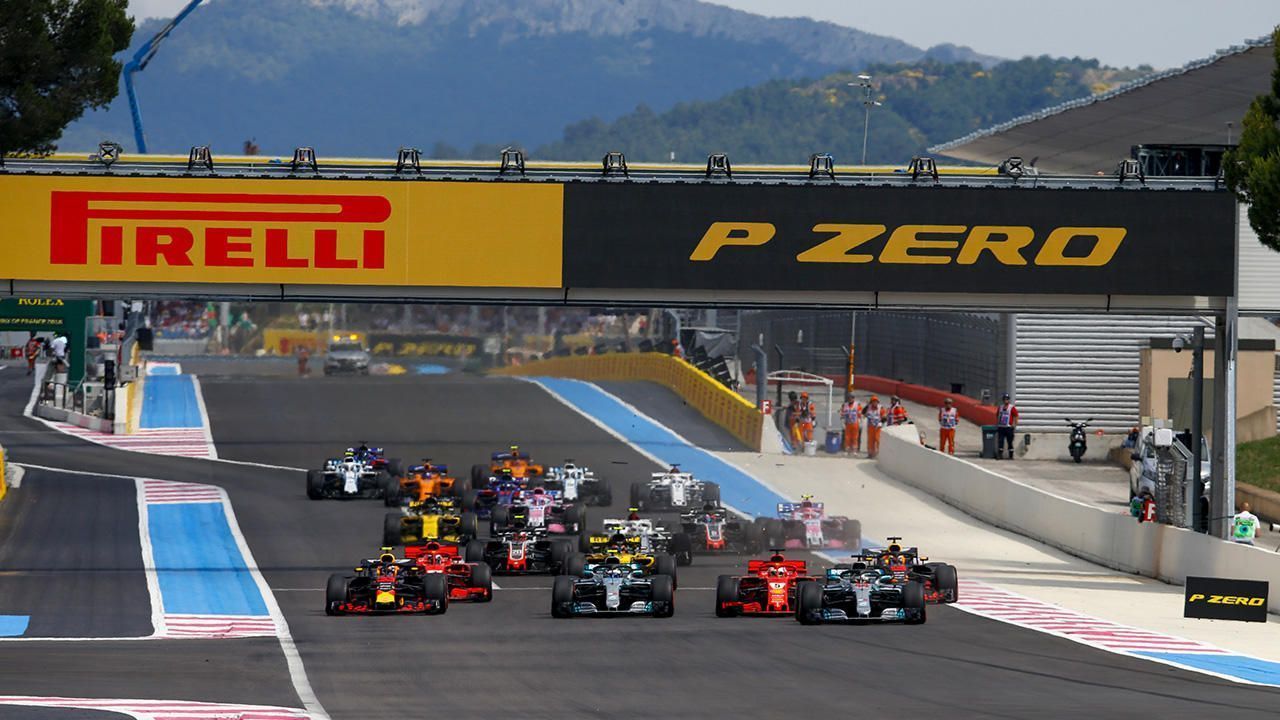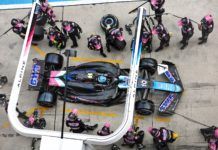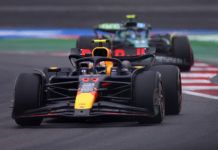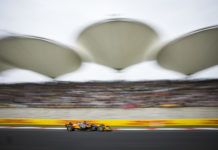It seemed like pretty straight forward race for Mercedes’ Lewis Hamilton in the 2018 Formula 1 French Grand Prix but the team had to use the help of Renault to fix upon his strategy for the race.
Hamilton started on the used supersoft tyres and had Red Bull Racing’s Max Verstappen – also on the supersoft tyres – behind him after Lap 1 due to the collision between Mercedes’ Valtteri Bottas and Ferrari’s Sebastian Vettel.
The British driver then built on a sound lead from Verstappen without much hesitation or challenge from the Red Bull driver. However, there was still a threat from the Dutchman in case there was a safety car or a pit error.
Mercedes opted to do a longer first stint with Hamilton who did 33 laps as opposed to Verstappen doing 25 on the same set of tyres. With only 21 laps of racing remaining, it seemed Mercedes would switch Hamilton to ultrasoft tyres for his second stint.
However, they went for the soft compound to remain on the safer side even though they didn’t have much data from the Friday practice session. They gambled by using the two Renault drivers as the reference to make the call.
Carlos Sainz started on the ultrasoft compound while Nico Hulkenberg was on the soft tyres in their first stint. Mercedes’ used their data to compare the two tyres and found the soft could see-through more laps with similar performance than the ultrasoft.
“Actually, we didn’t have good data from Friday,” started Andrew Shovlin, Trackside Engineering Director on Pure PitWall video. “We had an issue with Valtteri, who was due to do a long run on the soft tyre.
“So, we weren’t quite sure how the soft was going to compare to the ultra. So, in the early part of the race we were looking at the two Renaults, where we had Sainz on the ultra and Hulkenberg on the soft.
“What you could see from that was while the ultra had a really good initial phase, it would start to degrade and the soft was the tyre that would probably give you a better stint. It [soft option] would also mitigate the risk against Verstappen who was also on the soft tyre.
“If we matched strategies with him, it was a safer thing to do. So, fundamentally it just came down to performance and it is not just about how many laps the tyre will go. It’s about the average stint pace and which will get you to the end of the race the fastest.”
Explaining further how big or small the Verstappen factor was for Mercedes, Shovlin said the team chose to pit later than the Red Bull to be more certain of their tyre choice as the Dutchman also went on to the soft compound.
“In the early part of the race, the issue is we don’t really know how hard we can push the tyres, we don’t know how fast that Red Bull is going to be, we don’t know whether we are going to run out of tyres at the end of the stint,” he said.
“So, Lewis set off, he was working the tyres into a nice region, only able to pull a tenth or so per lap but just building a little bit of a buffer and you are trying to get enough of a gap that you are outside that undercut threat.
“As it happened, we were able to get the tyres to last quite well and Lewis started to push a little bit harder. But the key thing was we wanted to stay on track longer than they did because if we box and leave them out, we then risk losing the win.
“Because, there is there is always the VSC and safety car threat that would allow them to end up ahead of us. When we got onto that soft tyre, the race becomes a bit easier. We are on the same rubber but it is fresher, we know it is going to get to the end of the race.
“We have seen from the first stint that we can handle their pace. That was really just a case of keeping everything in a sensible condition on the car, making sure we don’t damage the tyres and cause a flat spot and just getting it home to the finish.”
In the end, Mercedes did well as Hamilton won the race by a good 7.090s margin over Verstappen and was able to retake the points lead after Vettel was only fifth. On the other hand, Bottas’ first-lap collision limited his chances.
Shovlin revealed that Mercedes’ ideal result was for him to fight back for a Top 6 finish. However, the late VSC and a second stop meant, he was only seventh – around a second behind Sainz. Bottas’ had vibrations from his tyres and Mercedes didn’t want to risk it.
After what happened to Williams’ Lance Stroll, they had were relieved since had they opted to finish on the same tyres, they wouldn’t have managed to. Talking about the incident, Shovlin said it was more the puncture which caused a bigger trouble than the collision.
“Simple answer was about five percent [when asked how much downforce the car lost],” he said. “[But] that wasn’t from the contact with Vettel, it was actually when the tyre fails and when it punctures, it starts to fall apart.
“It’s the tyre hitting the floor that does the damage on the way back. So, you are trying to drive it slow enough that you don’t damage the floor too much but equally quick enough that you can get back on the train when the safety car restarts.
“Now, the problem was the floor damage wasn’t just the bits that were knocked off but bits that were moving around and that’s why it’s a bit more complicated because in certain corners you lose more or less performance.
“Valtteri’s big issue was not just the loss of downforce but how unpredictable it was. So, some corners it was OK and some laps it was OK but other times it would catch him out and he’d feel a big loss of rear grip and that would lead to instability,” he explained.



















